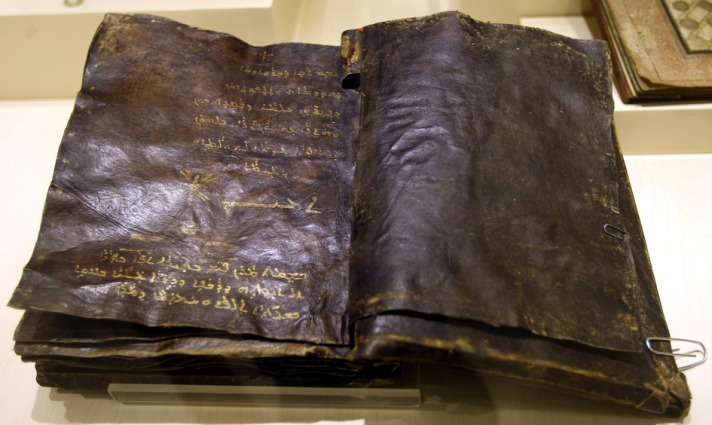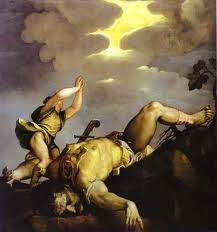 |
Archbishop Ullathorne - a passing
resemblance to Archbishop Longley |
In readiness for my journey to Australia in March, I thought that I should really find out more about the young Englishman who made such an impact on what was then a very young country.
I do know a little about William Bernard Ullathorne and what I know of him I like immensely.
He appears to have two overriding characteristics, holiness and decisiveness.
His decisiveness is shown from an early age and when he travels to Australia to assume the post of Vicar General for that country, he wastes no time in stepping into the leadership role, assigned to him by the Holy Father.
Still a very young priest, a precocious 27 years of age, he tells his Aussie confreres what's what the minute he steps off the boat.
Such direct speaking goes down well in Australia and the die was then cast for Ullathorne's outstanding ministry, more of which to come over the next few weeks.
So this is a picture of the man commencing when he was a lad of fifteen years.
William Bernard Ullathorne was the eldest of ten children born into a Yorkshire family in 1803. His father was a successful grocer and his eldest son must have inherited some of his father’s strong will and determination to succeed.
At the age of 12 he entered his father’s business and was set to work in the accounts office. This was, supposedly, a temporary measure (maybe to put young William under the watchful eye of Papa) prior to a second round of schooling but William had a desire to travel and the only way of achieving that dream was to go to sea.
At the tender age of fifteen, William was working as a hand on vessels plying their trade around the Baltic and Mediterranean.
It was while he was at Mass in a German town called Memel that he discerned what he later came to realise was a vocation.
Here is his account from his autobiography:-
“When Sunday morning came in the harbour, Mr Craythorne, the mate, said to me: ‘William, let us go to Mass.’ I fished up the Garden of the Soul from the bottom of my sea-chest, and we set off through the flat town of Memel, with its numerous windmills for sawing timber, and its churches in the hands of the Lutherans, until beyond the town we reached a considerable wooden structure exteriorly not unlike a barn.
There was a square yard of grass in front of it, surrounded by a low wall, and on one side the walk to the door was a mound surmounted by a large wooden figure on a cross, round the front of which sat a number of aged and decrepit people singing and soliciting arms.
The Mass had begun when we entered the chapel, the sanctuary was profusely decorated with flowers, and two banners were planted on the sanctuary rails, one of which, I recollect, represented St Michael the Archangel. I vividly remember the broad figure of the venerable priest and his large tonsure, which made me think him a Franciscan.
The men knelt on the right side, the women on the left, all dressed very plainly and much alike. With their hands united and their eyes recollected, they were singing the Litany of Loretto to two or three simple notes, accompanied by an instrument like the sound of small bells.
The moment I entered I was struck by the simple fervour of the scene; it threw me into a cold shiver, my heart was turned inward upon myself, I saw the claims of God upon me, and felt a deep reproach within my soul.
When we came out I was struck by the affectionate way the people saluted each other, as if they were all one family.
Whatever money was in my pocket went into the poor box, and when we got on board I asked Craythorne what religious books he had with him. He produced an English version of Marsollier’s Life of St Jane Chantal , and Gobinet’s Instruction of Youth, which I read as leisure served.
The venerable figure of St Francis de Sales and that of St Jane Chantal introduced me to a new world, of which I had hitherto known nothing.
A life filled with God and devoted to God was what I had never realised. Gobinet’s Instructions again took me into my conscience. Still there was much fancy in me, and I lived in a sort of rapture of the imagination until we reached London. I then wrote home and informed my parents that I wished to leave the sea and return home.
This was speedily arranged and I was again employed in my father’s business.
My dear mother, however, unacquainted with the change that had taken place in me, wrote to me before I left the ship, expressing a hope that I should give no more trouble to them than the rest of the family.
I cannot remember how it was, but though there was then a young priest resident at Scarborough, to whom I went, and under whom, at his request, I resumed the catechism, I did not at that time make my first Communion.
I took evening lessons in French with Mr Pexton, already named, and in walks with him he interested me in College life and studies; and I renewed my old habit of general reading.
But in the midst of this course of life we happened to receive a visit from a linen manufacturer of Knaresborough, who had a son studying with the Church, at the Benedictine Priory of Downside.
He took a fancy to my brother James, who had a fine boy’s voice, and was a principal singer at the chapel. He pressed him to go to Downside as a Church student, and spoke warmly about it to my parents.
But my brother did not feel the attraction.
Whereupon I acknowledged how much I should like it, and made known the altered state of my mind.
My father wrote at once to Dr Barber, the Prior, and the matter was settled to my great delight. As Downside is near Bath, I preferred going by London on board a packet sloop.
But whilst anchored at the mouth of the Thames we were caught in a severe January gale, and had to cut and run with about fifty sail more – of whom one, a Dutchman, went down – and got safe into Harwich, where in consequence of floating ice in the Thames, I did not delay, but went on by coach, and arrived at Downside in the beginning of February 1823, being nearly seventeen years old.
The College, as well as Priory, were then packed in the old mansion, with considerable contrivance; but the new College and Chapel were in course of preparation.
I made the twentieth boy in the school.
The first thing that struck me was the good feeling and piety which prevailed among the boys, and the kindly relations which existed between them and their masters.
The whole tone of thins (sic) was in great contrast to all I had ever known, and threw a light into my mind as to the practical bearing of the Catholic religion.
The next thing that struck me was the absence of worldly knowledge and experience in the Superiors, as well as in the monks, who nevertheless, by their great dignity, piety, and kindness at once attracted my reverence and veneration.
It revealed to me a world in utter contrast to the world I had known before…”
























